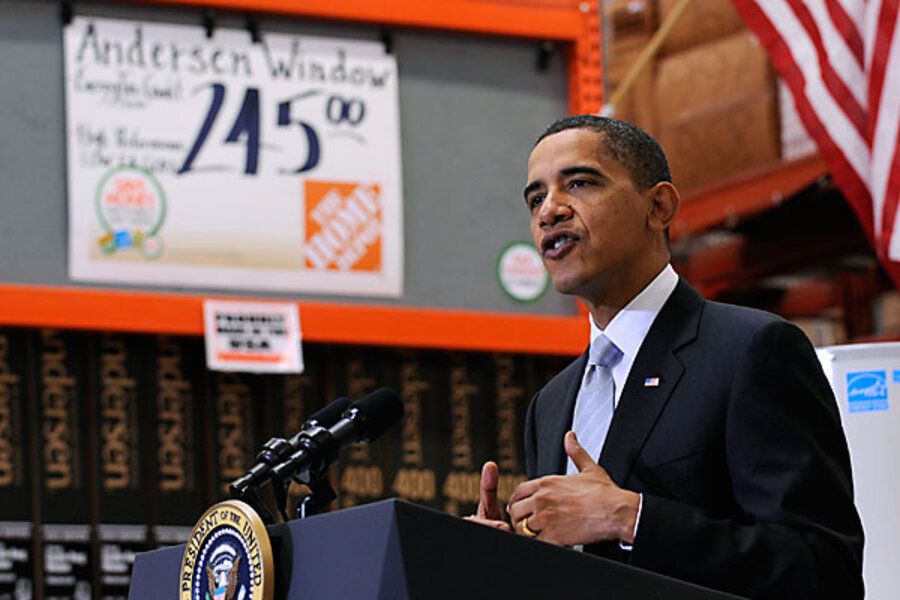Obama's home energy-efficiency pitch: insulation is 'sexy'
Loading...
President Obama on Tuesday pressed the importance of green home remodeling in the aisles of a Home Depot in Washington D.C. Tuesday as a way toward economic savings and energy independence.
"I am calling on Congress to provide new temporary incentives for Americans to make energy efficiency retrofit investments in their homes and we want them to do it soon," he said. Insulation is "sexy stuff," he said later, because it saves money.
The Obama administration is already banking on federal stimulus funding to shift consumer behavior toward energy-efficient homes. Green retrofitting of homes is on the rise in the US, researchers say, and Recovery Act incentives may be contributing to that trend.
The US home retrofit market will reach $35 billion by 2013, a 69 percent increase from 2008, according to SBI Energy, a market research company specializing in home energy. Specifically, the market for energy-efficient heating, ventilation, and air-conditioning retrofits is expected to grow from $3.1 billion in 2008 to $5.1 billion by 2013.
“We expect the market to continue to grow simply because energy efficiency will have the greatest impact at the least economic burden level to homeowners,” says Shelley Carr, publisher of SBI Energy reports.
The White House expects stimulus tax credits and funds to push the number of green home retrofits to 1 million by 2012. Retrofits numbered about 100,000 in January 2008.
“Our homes and our offices consumer almost 40 percent of the energy we use and contribute almost 40 percent of the carbon pollution that we produce,” Mr. Obama said Tuesday. “The simple act of retrofitting these [old] buildings to make them more energy efficient … is one of the fastest, easiest and cheapest things we can do to put Americans back to work while saving families money and reducing harmful emissions.”
Earlier this year, the American Recovery and Reinvestment Act allocated $5 billion to weatherize low-income homes, a tax credit for homeowners to cover 30 percent of energy-efficient upgrades, and $300 million to promote energy-efficient appliances. The Obama administration also pledged to accelerate the rate for setting efficient-energy standards for microwaves, washers/dryers, and refrigerators — from one per year during the Bush presidency to an expected six per year during Obama’s first term in office.
However, while increased home-owner spending on energy-efficient upgrades may save dollars, an impact on the environment requires a much more massive overhaul of the nation’s buildings, experts say.
The stimulus money is “a small down payment on a very big potential consumer benefit,” says Mark Cooper, research director of the Consumer Federation of America. But, he adds, it only “corrects a market failure” that currently exists in the home market.
If 50 million of the 120 million buildings in the US were retrofitted over the next ten years, says Mr. Cooper, “that would have a tremendous impact on the structure and demand for electricity and natural gas.”
---
Follow us on Twitter.





